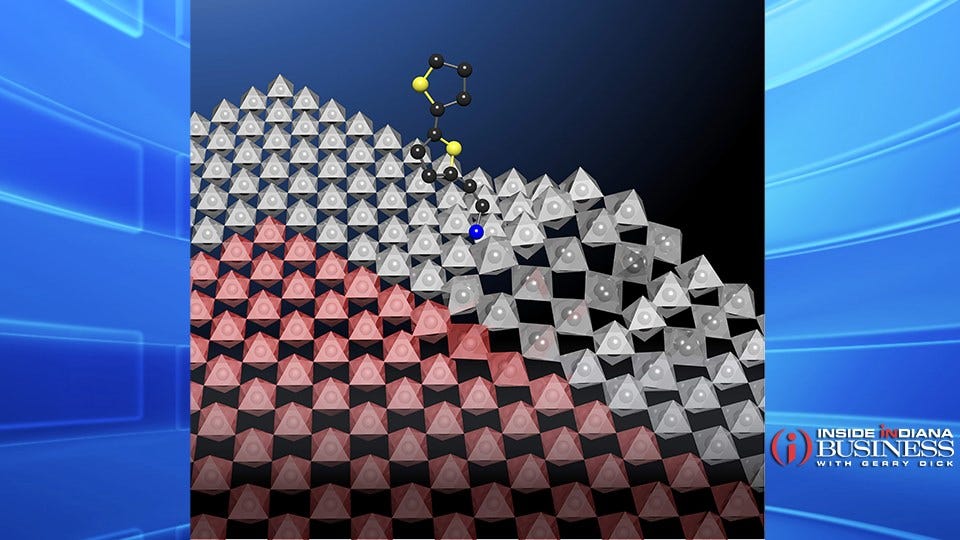Purdue Teams Discovers Way to Improve Solar Cell Efficiency
 (Purdue University illustration/Enzheng Shi)
(Purdue University illustration/Enzheng Shi)
Subscriber Benefit
As a subscriber you can listen to articles at work, in the car, or while you work out. Subscribe NowWEST LAFAYETTE, Ind. - A research team led by Purdue University says it has found a way to make more efficient solar cells with materials previously thought to be too unstable for use. The dominant material used in solar cells is silicon, which Purdue Assistant Professor of Chemical Engineering Letian Dou says is “pretty efficient” and has a reasonable cost, but is also very heavy. However, Dou says the new materials, called halide perovskites, are soft, flexible and “extremely cheap.”
The university says the reason halide perovskites haven’t been used previously is because they degrade rapidly, making them unstable. But Dou says it is a very promising technology.
“It’s like an organic material; it can be dissolved in organic solvent and then when it’s dry, when you remove the solvent, it’s crystallized to form very high-quality semiconductor (technology). But because of this unique feature…the chemical bond in this material is very weak, so it decomposes very quickly.”
Dou says the atoms in silicon are very stable and don’t move. But with halide perovskites, the ions are constantly moving and move even faster when put under the types of temperatures felt by solar panels.
“Our technology…puts a very rigid or specially-designed organic molecule on the surface of the perovskite so that we can somehow prevent the ion migration, making the material much more stable.”
Dou’s team was able to achieve that goal by adding a molecule called bithiophenylethylammonium, which stabilizes the ion movement and prevents the chemical bonds from breaking easily.
“If an engineer wanted to combine the best parts about perovskite A with the best parts about perovskite B, that typically can’t happen because the perovskites would just mix together,” said Brett Savoie, also an assistant professor of chemical engineering at Purdue. “In this case, you really can get the best of A and B in a single material. That is completely unheard of.”
The research was conducted in partnership with Shanghai Tech University, the Massachusetts Institute of Technology, the University of California – Berkeley, and the U.S. Department of Energy’s Lawrence Berkeley National Laboratory.
Purdue says perovskites have the potential to be even more efficient than silicon because they waste less energy when converting solar energy to electricity. They can also be processed from a solution into a thin film, which is cheaper to produce.
However, Dou says the challenge right now is making sure the perovskites have a long lifetime, as well as dealing with toxicity issues.
“These perovskites contain lead, so it’s a big issue. We are also working on lead-free perovskites, which can hopefully reduce the toxicity and maintain the high performance.”
Dou says the research has also found that perovskites could potentially have uses beyond solar technology.
“It’s also very promising for light-emitting diodes for solid-state lighting because it’s a so-called direct band gap material; it emits light very strongly. For silicon, it cannot emit light because it’s an indirect band gap material. But in those applications, the stability issue is even worse because LEDs, you have to apply relatively large voltage to drive the device…so the device degraded within a few minutes.”
Dou says the development of the technology is still very fundamental. He says researchers are continuing to study how to apply the technology to larger solar cells, as opposed to the smaller devices being used in the lab.
Dou says the perovskites are a very promising technology.
Dou says the research has also found that perovskites could potentially have uses beyond solar technology.
